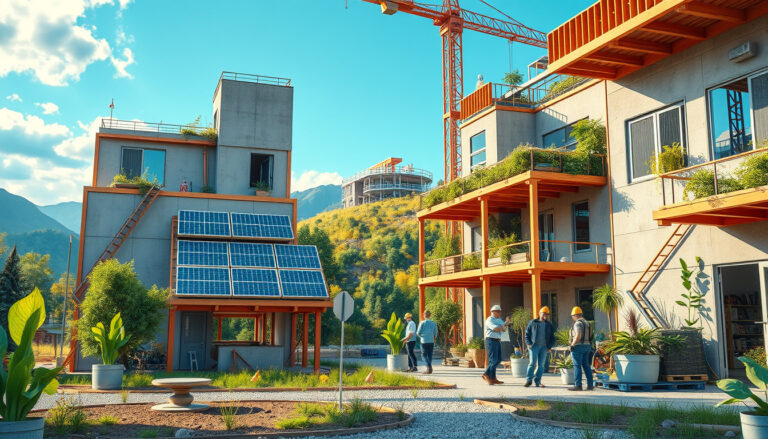In a world where environmental issues are becoming increasingly pressing, embracing eco-conscious living is no longer just an option—it’s a necessity.
Eco-conscious living entails making mindful choices in our daily lives that not only reduce our carbon footprint but also promote the well-being of our planet.
As we navigate through the complexities of modern life, it’s crucial to understand what eco-conscious living means and the positive impact it can have on our environment.
In this article, we will explore 10 simple steps that anyone can take to transition to a more sustainable lifestyle.
From evaluating personal habits to advocating for broader change, each step is designed to empower you to contribute to a sustainable future.


Step 2: Reduce, Reuse, Recycle: The Three Pillars of Sustainability
In the quest for eco-conscious living, the mantra ‘Reduce, Reuse, Recycle’ stands as one of the most effective ways to lessen our environmental footprint and promote sustainability.
Reducing waste starts with a mindful approach to consumption, where individuals choose to buy less and make informed purchases that prioritize quality over quantity.
By reusing items and finding creative ways to repurpose them, we not only extend their lifecycle but also reduce the demand for new products, further conserving resources.
Recycling, the final pillar, ensures that materials such as paper, plastic, and glass are processed and transformed into new products rather than ending up in landfills.
Together, these three practices foster a culture of eco-conscious living, encouraging communities to embrace sustainable habits that protect and nurture our planet for future generations.
Step 3: Choose Sustainable Products and Materials
Choosing sustainable products and materials is a fundamental aspect of eco-conscious living, especially in a beautiful country like Costa Rica, where natural resources are abundant and biodiversity is a point of pride.
When exploring real estate options in Costa Rica, potential homeowners and investors should prioritize properties that incorporate eco-friendly building materials, such as bamboo, reclaimed wood, and energy-efficient appliances.
Not only do these choices minimize environmental impact, but they also promote a healthier living space.
Additionally, consider homes that utilize renewable energy sources like solar panels or wind turbines, which are increasingly popular in the region.
Embracing sustainable practices in your real estate investment not only reflects a commitment to eco-conscious living but also enhances the long-term value of your property in the rapidly evolving real estate market of Costa Rica.

Step 4: Adopt a Plant-Based Diet for Environmental Benefits
Adopting a plant-based diet is a significant step toward eco-conscious living that offers myriad benefits for both the environment and personal health.
By choosing to consume less meat and more fruits, vegetables, legumes, and grains, individuals can greatly reduce their carbon footprint.
The production of plant-based foods generally requires less water and land compared to animal agriculture, which is a leading contributor to greenhouse gas emissions and deforestation.
Additionally, transitioning to a plant-based diet promotes biodiversity by reducing the pressure on land and resources.
With each meal, not only do you nourish your body, but you also make a conscious choice that contributes to a healthier planet.
Embracing this lifestyle can be a rewarding experience, allowing you to explore new flavors and culinary practices while championing sustainability.
Step 5: Reduce Energy Consumption and Shift to Renewable Sources
Embracing eco-conscious living is vital in the quest to reduce energy consumption and shift towards renewable sources.
Homeowners can begin by conducting an energy audit to identify areas of improvement in their energy usage.
Simple changes, such as upgrading to energy-efficient appliances, using LED lighting, and improving insulation, can dramatically lower electricity bills while benefiting the environment.
Additionally, incorporating renewable energy sources like solar panels not only reduces dependence on fossil fuels but also provides long-term savings and potential tax incentives.
By making informed choices and investing in sustainable technology, individuals can significantly decrease their carbon footprint and contribute to a healthier planet.
Frequently Asked Questions
What is eco-conscious living?
Eco-conscious living refers to adopting habits and making lifestyle choices that are environmentally friendly and sustainable.
It involves being aware of the impact of your actions on the planet and actively working to reduce your ecological footprint.
How can I assess my current lifestyle choices effectively?
Start by reflecting on your daily habits, including waste production, energy usage, and product consumption.
Keep a journal for a week to track how much waste you generate and the resources you consume, then identify areas for improvement.
What are the three pillars of sustainability?
The three pillars of sustainability are reduce, reuse, and recycle.
This means aiming to reduce waste, repurpose items whenever possible, and recycle materials to minimize environmental impact and conserve resources.
Why should I consider adopting a plant-based diet?
A plant-based diet can significantly reduce your carbon footprint as it generally requires less energy, land, and water resources compared to a meat-heavy diet.
It also helps decrease greenhouse gas emissions associated with livestock production.
How can I advocate for eco-conscious practices in my community?
Get involved in local environmental initiatives, join advocacy groups, or organize awareness campaigns.
Engaging with your neighbors, participating in community clean-ups, and promoting sustainable practices can also drive change and inspire others.





